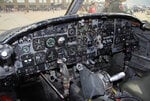WEP isn't much use if you can't use in the tropics or dessert conditions
No, the P-39N gives you notoriously bad digestion straight after the main course.
Not only that, but according to the reports on the 'N model under trial conditions is the following statement; "Airplane does not meet Air Corps cooling requirements at any of these powers."
Here: Memorandum Report on P-39N-1, A.C. No. 42-4400 (wwiiaircraftperformance.org)

